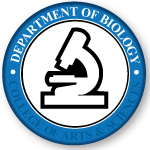Document Type
Article
Publication Date
7-21-2016
Publication Title
BMC Bioinformatics
Volume
17
Abstract
Background
Clustering is a common technique used by molecular biologists to group homologous sequences and study evolution. There remain issues such as how to cluster molecular sequences accurately and in particular how to evaluate the certainty of clustering results.
Results
We presented a model-based clustering method to analyze molecular sequences, described a subset bootstrap scheme to evaluate a certainty of the clusters, and showed an intuitive way using 3D visualization to examine clusters. We applied the above approach to analyze influenza viral hemagglutinin (HA) sequences. Nine clusters were estimated for high pathogenic H5N1 avian influenza, which agree with previous findings. The certainty for a given sequence that can be correctly assigned to a cluster was all 1.0 whereas the certainty for a given cluster was also very high (0.92–1.0), with an overall clustering certainty of 0.95. For influenza A H7 viruses, ten HA clusters were estimated and the vast majority of sequences could be assigned to a cluster with a certainty of more than 0.99. The certainties for clusters, however, varied from 0.40 to 0.98; such certainty variation is likely attributed to the heterogeneity of sequence data in different clusters. In both cases, the certainty values estimated using the subset bootstrap method are all higher than those calculated based upon the standard bootstrap method, suggesting our bootstrap scheme is applicable for the estimation of clustering certainty.
Conclusions
We formulated a clustering analysis approach with the estimation of certainties and 3D visualization of sequence data. We analysed 2 sets of influenza A HA sequences and the results indicate our approach was applicable for clustering analysis of influenza viral sequences.
Recommended Citation
Zhang, Shunpu; Li, Zhong; Beland, Kevin; and Lu, Guoquing, "Model-based clustering with certainty estimation: implication for clade assignment of influenza viruses" (2016). Biology Faculty Publications. 81.
https://digitalcommons.unomaha.edu/biofacpub/81
Funded by the University of Nebraska at Omaha Open Access Fund


Comments
© 2016 The Author(s). Open Access This article is distributed under the terms of the Creative Commons Attribution 4.0 International License (http://creativecommons.org/licenses/by/4.0/), which permits unrestricted use, distribution, and reproduction in any medium, provided you give appropriate credit to the original author(s) and the source, provide a link to the Creative Commons license, and indicate if changes were made. The Creative Commons Public Domain Dedication waiver (http://creativecommons.org/publicdomain/zero/1.0/) applies to the data made available in this article, unless otherwise stated.